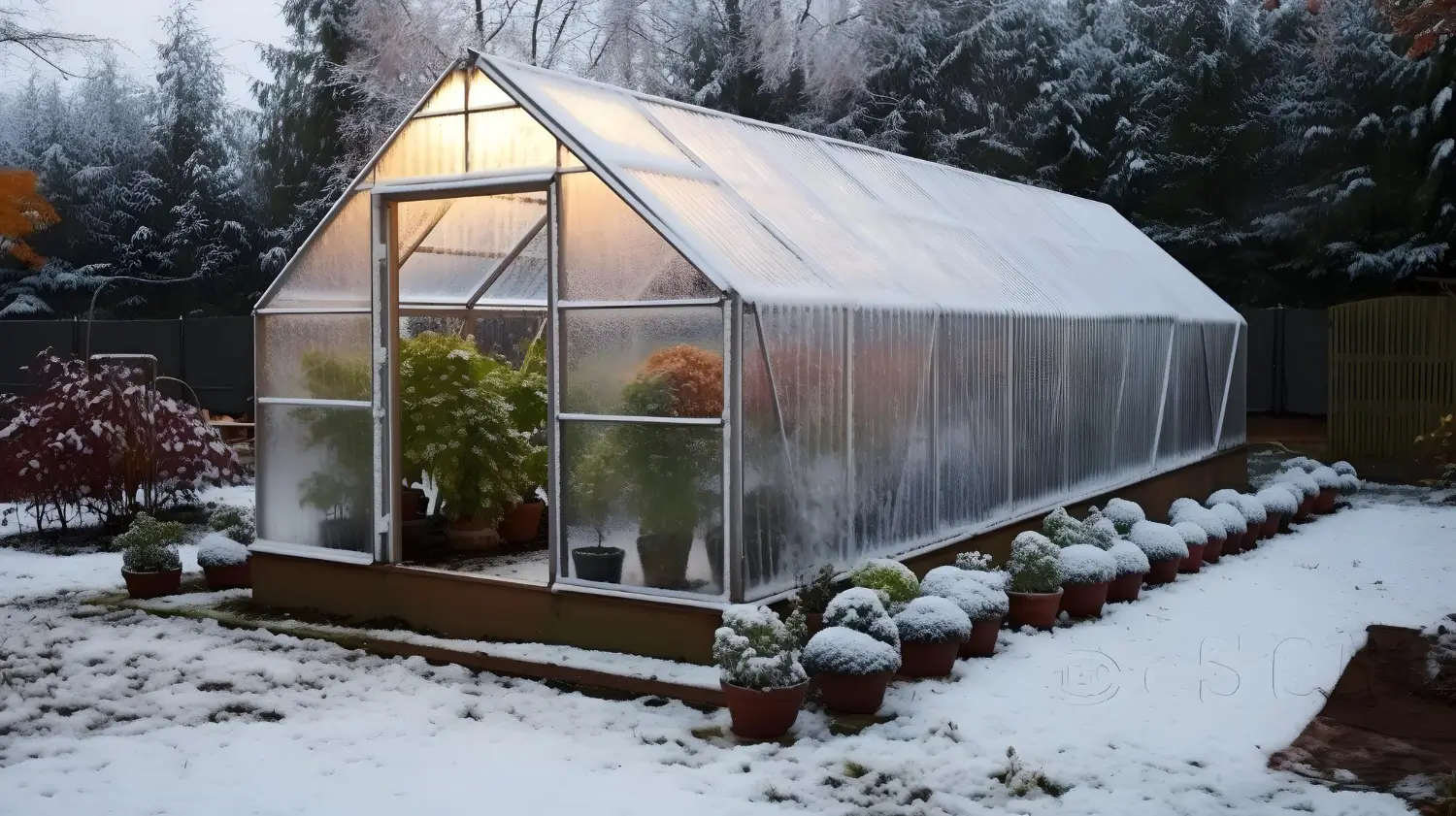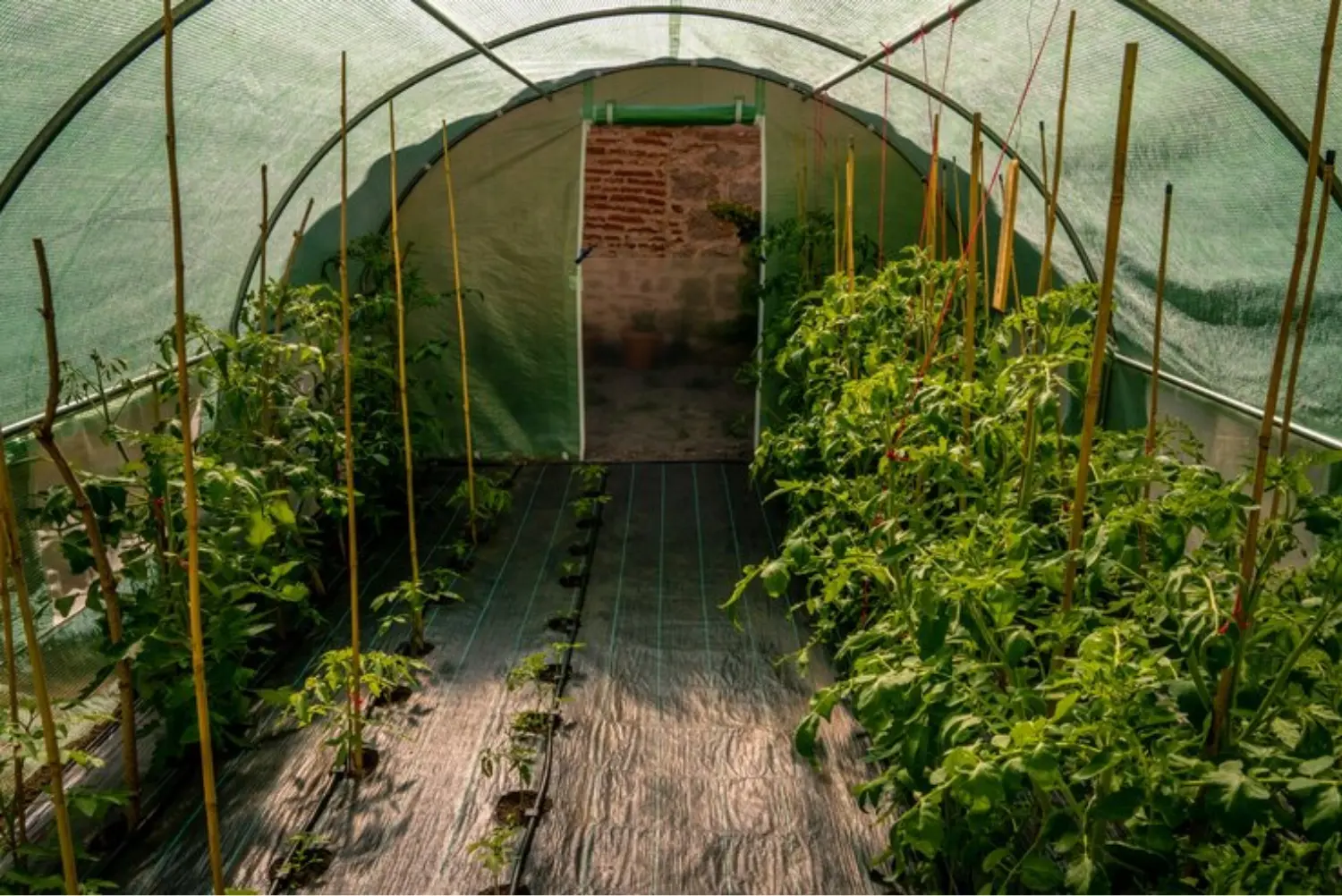
August 24, 2025

The demand for green areas will rise over time due to its advantages for the environment and all living things. Now, growers do not only rely on natural weather conditions to flourish gardens and lush green lawns. They set up their indoor gardens in controlled conditions. Some popular methods for growing plants in artificial conditions include greenhouses, hydroponic systems, and grow tents.
Greenhouses provide plants with the right light, temperature, and moisture so they don’t have to deal with the outside weather. Plants grown in greenhouses are healthier, stronger, and less likely to get sick. However, they need extra care and maintenance in different seasons to adapt to the outside weather.
In winter, greenhouses require efficient heating mechanisms and proper insulation to keep the heat inside. With the right winter greenhouse tips, such as using insulating materials and introducing reliable artificial heating, growers can prevent plant damage and encourage healthy growth.
Gardeners can find various indoor gardening systems at Growcycle, which offers guides on maintaining indoor green spaces. They can also purchase products such as heating systems, grow lights, and containers to improve their greenhouses.
A winter greenhouse is a building designed to protect plants from cold weather during the winter months. It is specially built to maintain a warm environment inside, allowing plants to grow even when it's freezing outside.
Winter greenhouses use insulation and heating systems to keep the temperature stable and prevent plants from getting damaged by frost or cold temperatures. The controlled environment inside the greenhouse helps plants stay healthy and continue to grow, even in the colder season.
A winter greenhouse and a summer greenhouse both serve the same purpose of creating a controlled environment for plants, but they have different requirements due to the seasons they are used in.
Features | Winter Greenhouse | Summer Greenhouse |
Ideal Plants | Winter-resistant plants like onions and broccoli. | Warm-season plants like peppers, beans, and tomatoes. |
Lighting | Requires artificial lighting due to less sunlight. | Sunlight is usually the sole source of illumination. |
Primary Focus | Shields plants from frosts. | Maintains temperature to promote plant growth. |
Ideal Material | Heavy-duty steel frame with double-layer polycarbonate covering. | Galvanized steel frame and polyethylene covering. |
Working | Holds heat to keep the inside warm. | Increase airflow to manage high-temperature |
When selecting a greenhouse for winter, it is important to consider factors that will help maintain a warm, stable environment for the plants despite the cold weather outside. Here are key things to think about:
A greenhouse should have good insulation to keep the warmth inside and protect plants from the cold. Materials like double-glazed glass, polycarbonate, or thermal blankets are great at trapping heat. These materials help maintain a stable temperature and prevent frost from damaging the plants inside.
Temperatures can drop dramatically during winter, so it’s essential to have a reliable heating system. This can include electric heaters, propane heaters, or even solar-powered heating systems. A good heating system will keep the greenhouse warm even when it's freezing outside, ensuring that plants stay healthy and continue growing.
Choosing the right size of greenhouse is important based on how many plants need to be grown. A larger greenhouse gives more space for plants but may also need more insulation and heating. It’s crucial to consider how much space the plants will need to grow properly and thrive.
Proper ventilation is still important during the winter months. Even though it’s cold outside, air must circulate inside the greenhouse to prevent too much humidity from building up, which could harm the plants. Greenhouses with adjustable roof vents or side vents are a good option, as they allow fresh air in while keeping the heat inside.
The greenhouse frame must be strong enough to handle harsh winter weather, such as snow and strong winds. Materials like steel, aluminum, or galvanized metal are ideal because they are durable and resistant to the elements. A sturdy frame will ensure the greenhouse stays standing and protects the plants from extreme weather.
In winter, sunlight is weaker, and daylight hours are shorter. Selecting a greenhouse that maximizes the amount of light inside is important. Materials like clear or translucent polycarbonate or glass allow more sunlight to come in. Growers may also need to add artificial grow lights to supplement the natural light and help plants grow.
If the area where the greenhouse is located gets heavy snow, it’s important to check the snow load capacity of the greenhouse. This refers to how much weight the structure can hold without collapsing. A greenhouse that can handle snow accumulation will prevent the roof from being damaged by snow or ice.
The type of greenhouse flooring is important for drainage and maintaining the plants' health. Gravel, concrete, or brick floors are great choices because they allow water to drain properly, preventing puddles and moisture buildup. This can reduce the risk of mold or mildew, which can harm plants.
The greenhouse should be built to withstand tough winter weather, including freezing rain and strong winds. A well-built greenhouse with tightly sealed panels and a sturdy frame will protect plants from extreme conditions. The materials should also be weather-resistant to prevent damage during storms.
An energy-efficient greenhouse helps reduce the cost of heating during the winter. Features like solar panels or thermal mass (materials that store and release heat) can help regulate the temperature inside without using too much energy. Choosing an energy-efficient greenhouse is good for both the environment and the wallet.
Ideal Plants to Grow in Greenhouse for Winters
Here are some ideal plants to grow in a winter greenhouse:
A heating system is essential for maintaining the right temperature in a winter greenhouse. Here are some common heating options and considerations for a winter greenhouse:
Electric heaters are one of the easiest ways to quickly regulate a greenhouse's inside temperature. However, growers must ensure all safety measures while using an electric heater. Keeping it on for long may cause gas leakage that could cause fire hazards. Also, growers may ensure the heat circulates well throughout the greenhouse via a suitable fan.
Propane-powered radiant heaters can maintain the ideal temperature in the greenhouse. They use natural gas to heat the environment via IR radiation, which plants and interior surfaces absorb. The heater heats all areas equally, and there is no need for a fan to circulate the heat.
Unit heaters use electricity to heat the greenhouse and spread the heat throughout the area via a fan. These small heaters are convenient for regulating the inside temperature. Growers may attach it to the greenhouse’s roof. Additionally, connecting it via any opening to the exterior is preferable to get sufficient oxygen.
Hot water is another super-easy way to heat a greenhouse. Growers heat the boiler via biomass, allowing it to pass through several wall and surface pipes. While passing, hot water emits heat that efficiently and evenly warms the surroundings. It is a cost-friendly way of heating as growers can save on electricity costs.
It is good to increase the thermal mass of soil, clay, and water to regulate the necessary heat in the greenhouse. Also, keep these things preferably near the windows. These absorb the heat during the day and emit it during the night. In this way, growers may adjust the temperature without spending extra money.

Agricultural productivity measures how effectively agricultural inputs, such as labor and land, are used to grow crops and livestock. It significantly impacts food security, economic growth, and agricultural sustainability. As the world's population grows, so does the demand for food, necessitating innovations to boost agricultural output.
LEARN MORE →Insulating a greenhouse in winter is crucial for maintaining a stable, warm plant environment. Proper insulation helps retain heat, reduces energy costs, and protects plants from frost and extreme temperatures. Here are some effective ways to insulate a greenhouse during the winter months:
Any cracks or broken areas in the greenhouse materials impact its insulation and considerably waste heat. Moreover, cold air from outside is more likely to enter through them. For better insulation, growers should examine the greenhouse surfaces and fix cracks.
Growers may use reflective material for insulation to prevent heat loss from the walls. The area receives sunlight with this method, but the trapped heat can not escape the greenhouse. Usually, the wall facing north gets the least sunlight, and proper insulation is a must for growers. Adding leaves or gardening trash outside the north-facing wall is better for the extra insulation.
The inside heat can leave the greenhouse via the floor. By adding reliable insulation, growers can save the required heat within the greenhouse. Polystyrene sheets can effectively hold the heat. Certain landscape fabrics maintain insulation by keeping the heat but can allow excess water to pass. These fabrics are suitable for maintaining water levels in a greenhouse.
Bubble wrap is an energy-efficient way of insulating greenhouse gases. It is super easy to introduce bubble wrap to insulate a greenhouse. Growers should measure the sides and ceiling of the greenhouse. Then, they should fix bubble wrap to the sides, frames, and roof of the greenhouse. Secure it tightly to the surfaces via nails, pins, or wires.
Growers may add organic mulch to the plant roots to prevent the escape of proper heat. This organic matter acts as a barrier for retaining the heat inside. Plants do not have to suffer extreme frosts on colder nights with this mulch layer. Moreover, mulching the roots from winter frosts prevents root damage and positively impacts healthy plant growth.
Thermal curtains are equally effective in regulating the greenhouse's temperature during summer and winter. On colder nights, they effectively hold the heat inside, preventing heat loss.
Aluminized or energy curtains are ideal as they keep the greenhouse warm in winter and cool during summer. The heat plants release is reflected into the greenhouse by these aluminized curtains.
Here are some tips for maintaining a healthy environment in a winter greenhouse:
In winter, a greenhouse creates the perfect environment for many types of plants. Here are some benefits that greenhouses offer during this season:
Are Greenhouses suitable for winter?
Greenhouses are an excellent choice for growing plants in winter without damaging them. They provide plants with the necessary light for photosynthesis and the ideal temperature to promote growth despite unfavorable outside conditions.
What is best to cover plants in winter?
Frost or extreme cold may damage the plants, so growers must cover them with a suitable covering. Frost cloths or burlaps are convenient for this. Growers can also use closures during intense winter.
How do I reduce moisture in the Greenhouse?
To minimize moisture levels, growers may increase air flow, which can push away the excess water as vapors. A dehumidifier can also serve the purpose well.
Winter greenhouses are good for growers who want to create healthy garden spaces, both indoors and outdoors. Growers should make sure to maintain a steady temperature and enough moisture inside these gardens. Growcycle for greenhouses provides many energy-saving heating and lighting options. Using these tools, growers can build strong and healthy vegetable and fruit gardens.
1. University of Minnesota - Deep Winter Greenhouses
2. University of Missouri - Turning Winter into Summer: How Greenhouses Work in the Winter
Disclaimer: This material is for informational purposes only and should not be relied on for legal, medical, financial, or any other form of professional advice.